Scroll to view Timeline
Canada's last, true west story
The 1880s in Western Canada
was a time of growth, expansion, tension and tragedy. The plains bison were practically gone, and the way of life was changing quickly for many of the people who had lived there for generations.

As settlers moved westward...
both Métis and Plains First Nations became uneasy with what that meant for their way of life. The Métis in particular were concerned about the future of the lands they had settled along the South and North Saskatchewan Rivers.
Louis Riel
In 1884, Métis representatives from the Batoche, Prince Albert, and St Laurent area persuaded Louis Riel, who was then living in Montana, to return and help them petition the federal government to address their grievances. They had seen what he achieved in 1870 to secure recognition of Métis land ownership, and hoped he could do so again.

However, by March of 1885, after little progress was made through numerous diplomatic efforts, the Métis at Batoche declared a "Provisional Government" of their lands, naming Riel as president.
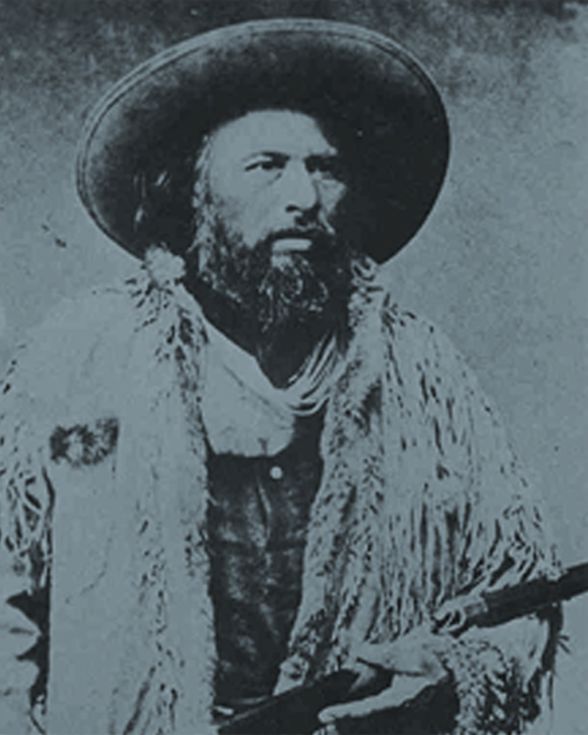
Gabriel Dumont
Riel then named Gabriel Dumont as his military commander. Dumont was a multi-lingual famous buffalo hunter, and had operated a ferry across the South Saskatchewan River for a number of years, upstream from Batoche. He also owned two quarter-sections of farm land a few miles south of Batoche.


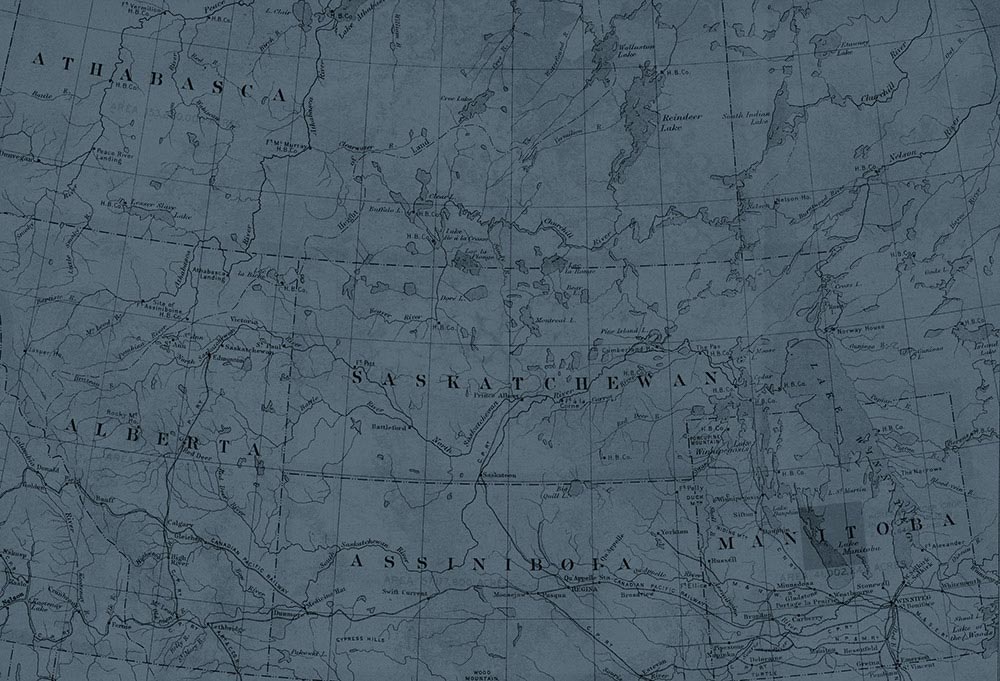


March 19, 1885
Riel and his government seized the parish church at Batoche (St. Antoine de Padoue), which became the headquarters for his Provisional Government.
Shortly afterwards, Riel with Gabriel Dumont and supporting volunteers also occupied the nearby community of Duck Lake.
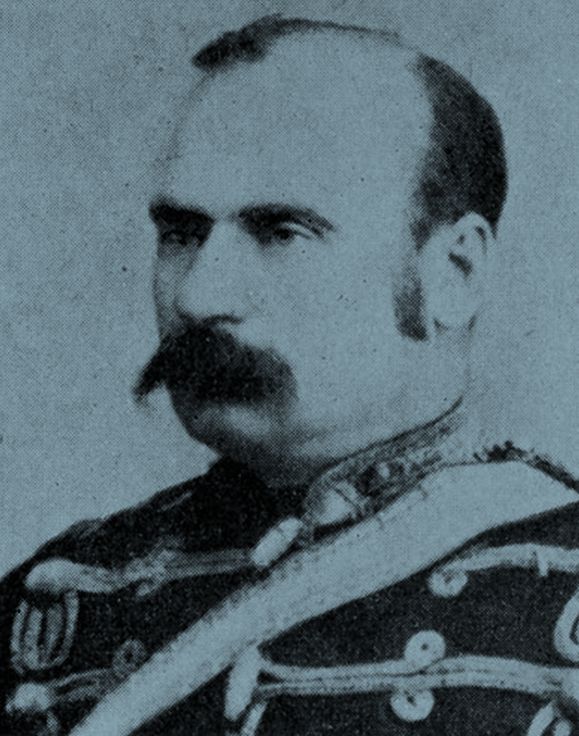
March 26, 1885
A North-West Mounted Police force based at Fort Carlton under the command of Superintendent Crozier approached Duck Lake.
 The Battle of Duck Lake
The Battle of Duck Lake
A Battle ensued between the Métis force and the North-West Mounted Police (NWMP). The Métis forced the retreat of the NWMP.
In the end, both sides suffered losses, with 18 dead, and 15 wounded.






March 27, 1885
The North-West Mounted Police abandoned Fort Carlton, fearing for their safety after the Battle of Duck Lake.
First Nations living about 100 miles west of Duck Lake near Battleford, soon learned of the Battle at Duck Lake between the Métis and the NWMP.
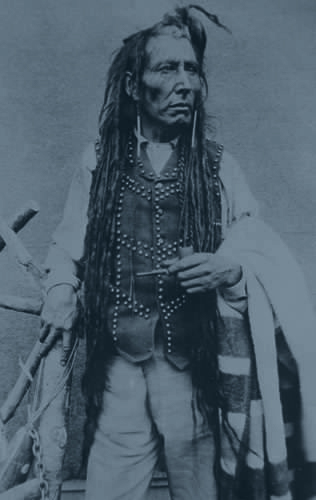
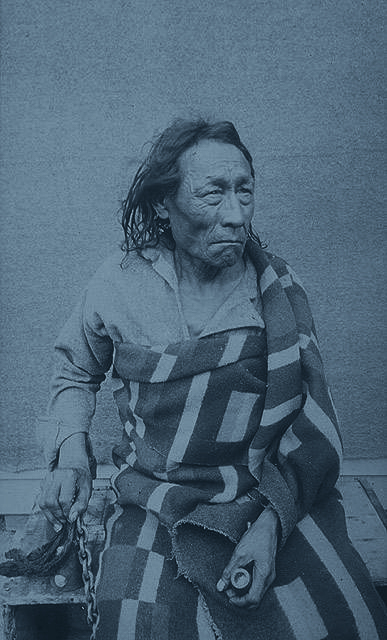
Chief Poundmaker

Chief Big Bear

March 29, 1885
(First Nations) Bands including Cree from Poundmaker Reserve (west of Battleford), and Assiniboine from the Eagle Hills (south of Battleford), were in need of food, supplies, and provisions promised for their people under Treaty. They sought assistance from the Indian Agent at Battleford, but failed to obtain the promised assistance.
 Conflict at Battleford
Conflict at Battleford
Nearly 500 Battleford civilians had fled for Fort Battleford, the nearby North-West Mounted Police post for shelter and safety within its stockade.
When the starving First Nations arrived they found the town of Battleford empty and helped themselves to provisions they were unable to get, including food, livestock, guns, and ammunition over the next 5 to 6 days.







April 2, 1885
A group of Cree warriors led by War Chief Wandering Spirit from Chief Big Bear's Band attacked the small settlement near Frog Lake (located presently in Alberta). Many of Chief Big Bear's people were close to starvation and desperately in need of food. Attempts to obtain provisions failed and violence erupted.
Anger among the Cree in the area was directed largely at the representative of the Canadian government, the Indian Agent Thomas Quinn, who was the source of the inadequate rations that kept the Cree in a state of near-starvation.
 The Frog Lake Massacre
The Frog Lake Massacre
Nine people from the settlement were killed, and three were taken captive.
The "Frog Lake Massacre", as it was called, prompted the Canadian government to officially take notice of the growing unrest in Western Canada.
The Government Responds
Troops were quickly recruited in Quebec, Ontario, and the Maritimes, and arrangements were made with the new Canadian Pacific Railway to move them west. Major General Frederick Middleton was placed in command.
This strategy helped the Prime Minister at the time, John A. Macdonald, by providing a rationale to fulfill his election promise to unite the country with a railway.
In addition, the Alberta Field Force was established at Calgary, comprised of NWMP, retired soldiers, ranchers and cowboys, and supported by newly recruited military volunteers from Quebec.








 The Battle at Fort Pitt
The Battle at Fort Pitt
After the Frog Lake "Massacre", some 250 Cree warriors moved southeast from Frog Lake to camp on a hill overlooking Fort Pitt. This was a small NWMP post, and a trading post, situated on the north bank of the North Saskatchewan River.
April 15, 1885
Chief Big Bear's Cree band besieged the fort. After a skirmish in which a NWM Policeman was killed, the defenders were overcome. Chief Big Bear permitted the fort's NWMP detachment (23 men) to flee downriver and then took the (44) civilian occupants prisoner. The post was looted and burned.









April 23, 1885
The Canadian militia moved carefully downstream from Saskatoon and Clarke's Crossing in the direction of Batoche. General Middleton split his forces, keeping half of them on each side of the river.
Meanwhile, Dumont and roughly 200 men moved upstream from Batoche along the east bank, to Tourond's Coulée and planned to ambush the militia as they crossed this large coulee.
 The Battle of Touround's Coulée
The Battle of Touround's Coulée
On the morning of April 24, before crossing the coulee, a Canadian cavalryman spotted the ambush, at which point both sides opened fire on each other. The Battle of Fish Creek/Tourond's Coulée left over 20 dead, and dozens wounded and was considered a Métis victory.
Following this action, Middleton decided to delay his advance on Batoche, consolidate his force on the east side of the river, and await reinforcements.










Meanwhile, a column of over 700 Canadian troops, led by Lieutenant Colonel William Otter arrived at Fort Battleford to relieve the small garrison and the hundreds of civilians taking shelter there. A few days later, Otter ordered the attack on Poundmaker’s band in retaliation for the occupation of Battleford.
May 2, 1885
On May 2nd, Otter led a column of 392 men to attack the Cree and Assiniboine at Cut Knife Hill, arriving there shortly after dawn. There were nine Cree bands and three Assiniboine bands encamped there.
 The Battle of Cut Knife Hill
The Battle of Cut Knife Hill
After seven hours of fighting among the coulees and ravines, the Cree and Assiniboine, led by Chief Fine Day, forced Otter to retreat. Chief Poundmaker then intervened to stop his people from attacking the retreating troops, saving them from further losses. Casualties on both sides included 23 dead and 17 wounded.










The Battle of Batoche
May 9, 1885
In the morning of May 9th, General Middleton and his replenished forces, totaling 916 regulars and militia, began his first attack on Batoche.
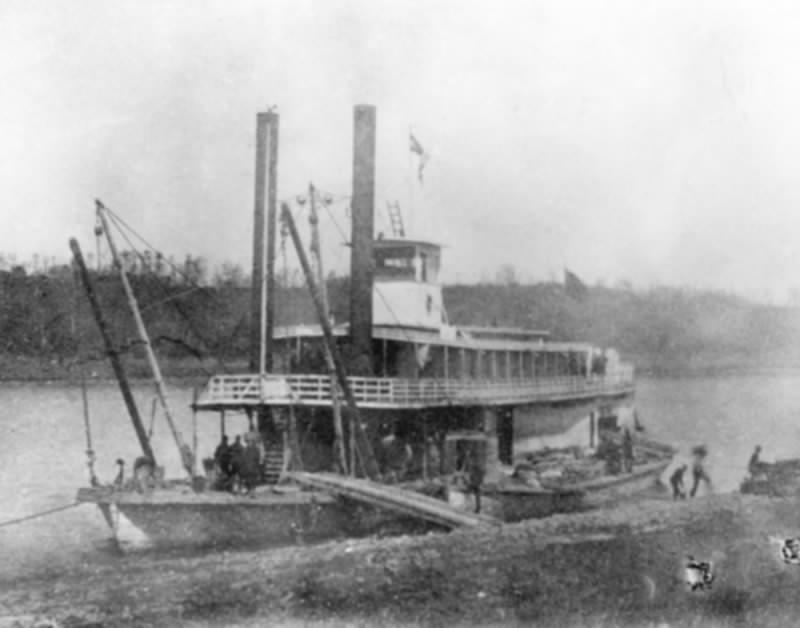
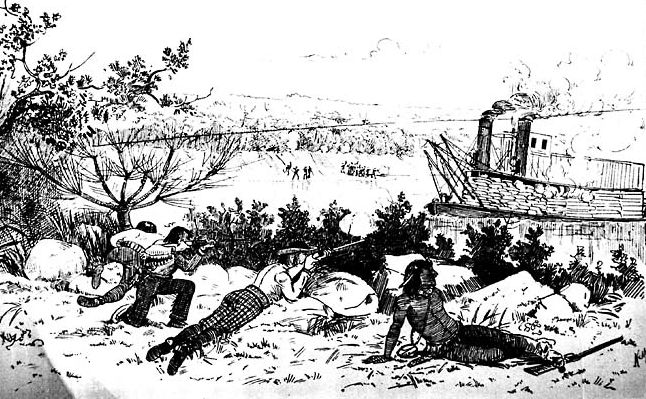
The SS Northcote
The plan was to use the paddle-steamer Northcote to make a diversionary attack on the town from the river, disembarking 50 soldiers at the rear of the town while the main body attacked the front.
However, the defenders of Batoche were able to disable the Northcote by lowering the Batoche Ferry cable which sliced off the Northcote's smokestacks, rendering the ship powerless. The Northcote gradually drifted downstream, and out of the battle. In addition, the main body under Middleton was late in reaching the settlement, and the following action was scattered and inconclusive. The Militia eventually retired to a 'Zareba' (a fortified camp), for the night.
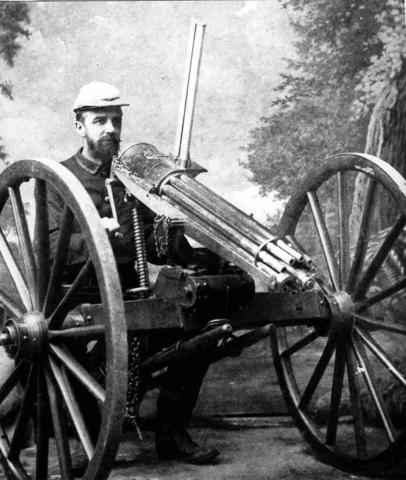
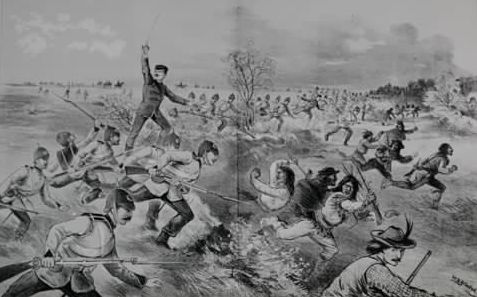
May 10 & 11, 1885
The following two days consisted of the troops attacking the Métis lines with little success, returning to their camp each night.
The Gatling Gun
During the three-day battle, the militia used a Gatling gun - an early machine gun - on the Métis and First Nations defenders. The gun's impact was limited, causing mostly psychological damage.
Weary, and running low on ammunition, the Métis had staved off the attacks as long as they could.

May 12, 1885 Batoche is Captured
Following two days of the troops attacking the Métis lines with little success. Weary and running low on ammunition, the Métis had held off the attacks as long as they could.
On May 12, after a successful diversion which drew many Métis away from their defensive positions, Batoche was taken by frontal assault.
May 15, 1885
The Métis resistance was broken and on May 15 Louis Riel surrendered.
May 26, 1885
Chief Poundmaker surrendered himself to General Middleton at Fort Battleford.











While fighting continued in what is now Saskatchewan, Major-General Thomas Bland Strange with his Alberta Field Force left Calgary and marched north and then east towards Fort Pitt, where they arrived on May 25.
May 28, 1885
Major-General Strange and his troops located the Frog Lake Cree north of a very prominent hill known as Frenchman Butte.
 The Battle of Frenchman Butte
The Battle of Frenchman Butte
About 200 warriors, led by War Chief Wandering Spirit, were dug in with rifle pits overlooking a steep valley containing a swampy creek. Strange and his force occupied the other side of the valley, and both sides exchanged fire for several hours.
Strange and his force returned to Fort Pitt for supplies and more ammunition, and the Cree along with their hostages moved northeastwards towards Makwa Lake.












June 3, 1885
The NWMP, led by Major Sam Steele, caught up with the Frog Lake Cree who had retreated from Frenchman Butte.
 The Battle of Steele Narrows
The Battle of Steele Narrows
The Cree made a determined stand with the last of their ammunition, but fled after suffering four casualties. With that, the final shots of the resistance had been fired.
July 2, 1885
With the battles at an end, the Canadian government had Louis Riel and Chief Poundmaker in custody. Gabriel Dumont had fled to Montana after the Battle of Batoche.
Chief Big Bear would surrender at Fort Carlton on July 2nd.
July 28, 1885
The trial of Louis Riel began. Riel faced six charges of treason for his role in what the government called a rebellion and which was viewed by the Métis as a resistance.

The Jury
Riel's trial was conducted entirely in English and the jury was made up entirely of non-Métis Anglophones.
The trial lasted five days, resulting in a guilty verdict. Riel rejected his lawyer's attempt to argue not guilty by reason of insanity.
Life, without the dignity of an intelligent being, is not worth having.
-Louis Riel
July 31, 1885
After only half an hour of deliberation, Riel was found guilty and sentenced to death.
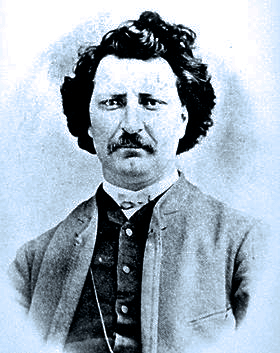
I am glad that the Crown has proved that I am the leader of the Métis in the NorthWest. I will perhaps be one day acknowledged as more than a leader of the Métis, and if so I hope I will also have the opportunity to be acknowledged as a leader of good in this great country.
-Louis Riel
October 5 - 10, 1885
From October 5 to 10, the six Cree members of Big Bear’s band were found guilty of the killings at Frog Lake and the two Assiniboine warriors were found guilty of the deaths of a farmer and farm instructor near Battleford. They were found guilty and sentenced to death.
November 16, 1885
After numerous legal and political appeals, Louis Riel was hanged at the North West Mounted Police barracks in Regina, SK.
November 27, 1885
The eight First Nations men were hanged in Fort Battleford. This would remain the largest mass hanging in Canadian history.
The Aftermath of 1885
The Resistance of 1885 altered countless lives and was a time of great uncertainty and fear. The events resulted in many deaths on all sides including First Nations, Métis and government forces. Long lasting effects were felt by generations of First Nations and Métis in Saskatchewan, who were subjected to increased marginalization after the Resistance. Many challenges followed for the people of the plains as the settlement of western Canada continued.
In present times, we are hearing other perspectives on these events and fully acknowledge that the victors in any conflict are the first to tell the story and from their own points of view.